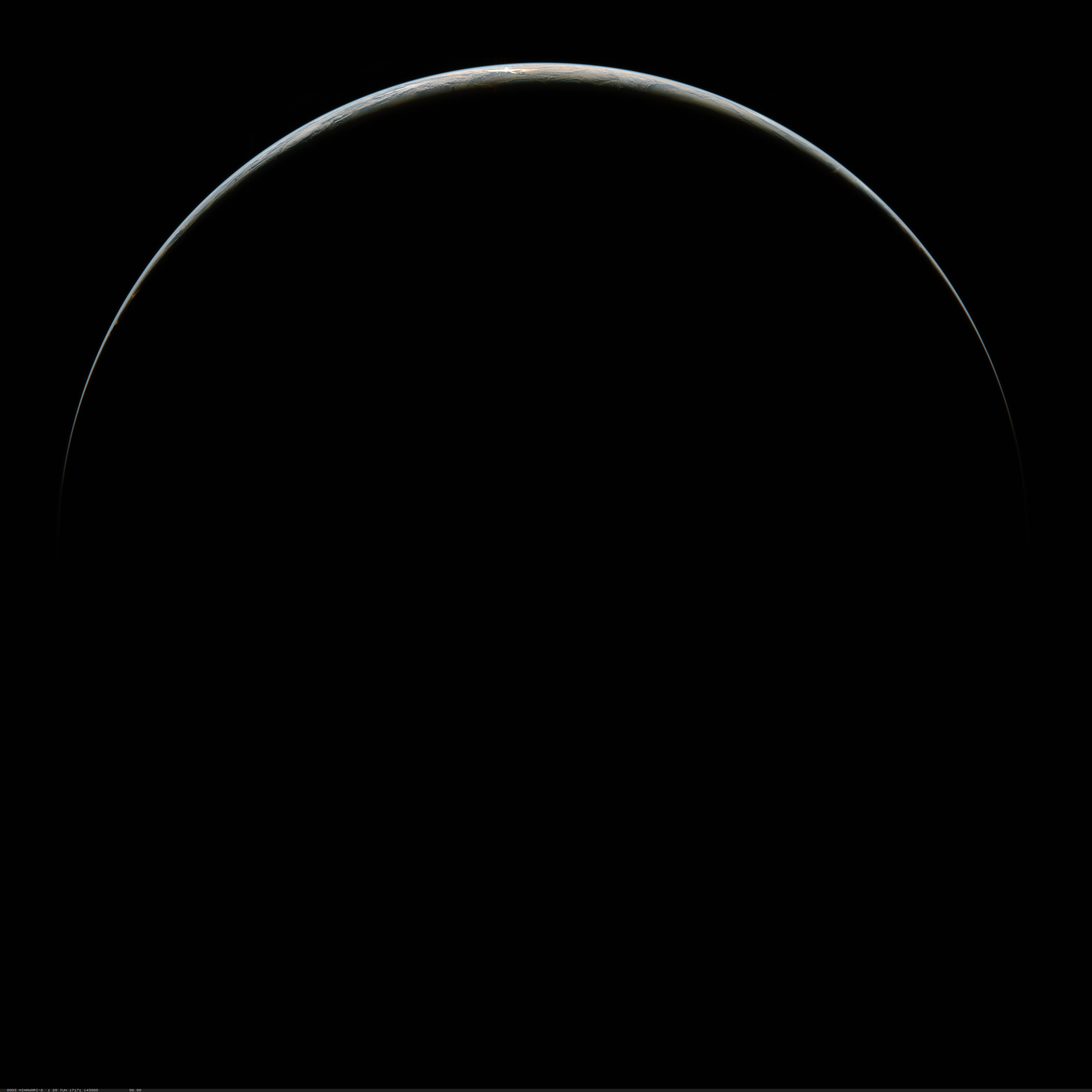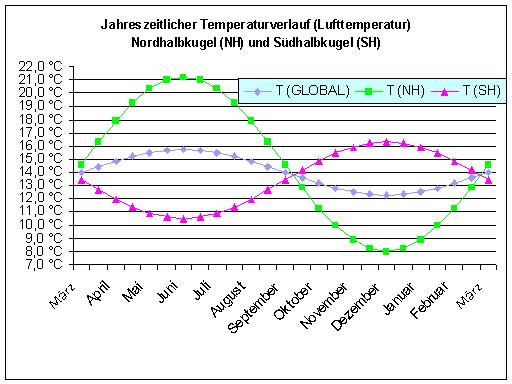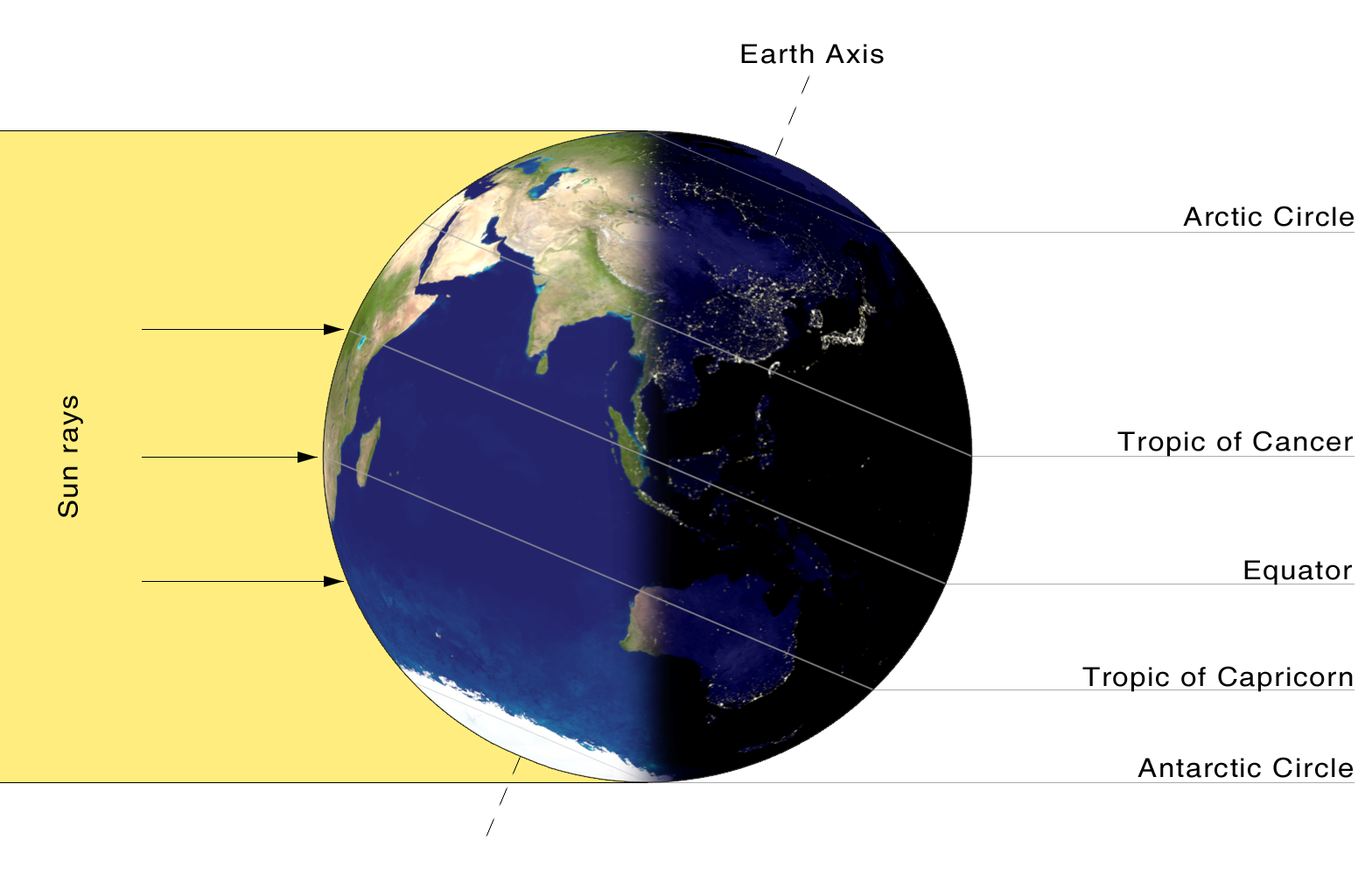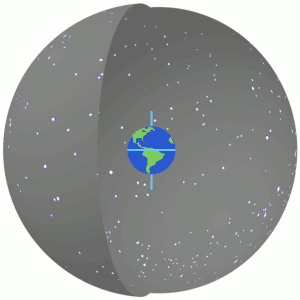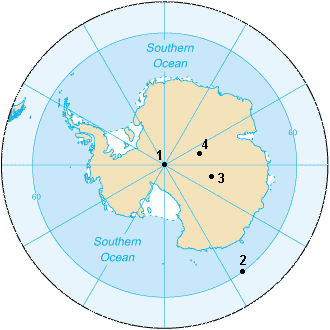|
Solstice
A solstice is the time when the Sun reaches its most northerly or southerly sun path, excursion relative to the celestial equator on the celestial sphere. Two solstices occur annually, around 20–22 June and 20–22 December. In many countries, the seasons of the year are defined by reference to the solstices and the equinoxes. The term ''solstice'' can also be used in a broader sense, as the day when this occurs. For locations not too close to the equator or the poles, the dates with the longest and shortest periods of daylight are the summer and winter solstices, respectively. Terms with no ambiguity as to which hemisphere is the context are "June solstice" and "December solstice", referring to the months in which they take place every year. Etymology The word ''solstice'' is derived from the Latin () and (), because at the solstices, the Sun's declination appears to "stand still"; that is, the seasonal movement of the Sun's sun path, daily path (as seen from Earth) paus ... [...More Info...] [...Related Items...] OR: [Wikipedia] [Google] [Baidu] |
Winter Solstice
The winter solstice, or hibernal solstice, occurs when either of Earth's geographical pole, poles reaches its maximum axial tilt, tilt away from the Sun. This happens twice yearly, once in each hemisphere (Northern Hemisphere, Northern and Southern Hemisphere, Southern). For that hemisphere, the winter solstice is the day with the shortest daytime, period of daylight and longest night of the year, and when the Sun is at its lowest culmination, daily maximum elevation in the sky. Each Polar Circle, polar region experiences polar night, continuous darkness or twilight around its winter solstice. The opposite event is the summer solstice. The winter solstice occurs during the hemisphere's winter. In the Northern Hemisphere, this is the December solstice (December 21 or 22) and in the Southern Hemisphere, this is the June solstice (June 20 or 21). Although the winter solstice itself lasts only a moment, the term also refers to the day on which it occurs. Traditionally, in many Tem ... [...More Info...] [...Related Items...] OR: [Wikipedia] [Google] [Baidu] |
Summer Solstice
The summer solstice or estival solstice occurs when one of Earth's poles has its maximum tilt toward the Sun. It happens twice yearly, once in each hemisphere ( Northern and Southern). The summer solstice is the day with the longest period of daylight and shortest night of the year in that hemisphere, when the sun is at its highest position in the sky. At either pole there is continuous daylight at the time of its summer solstice. The opposite event is the winter solstice. The summer solstice occurs during the hemisphere's summer. In the Northern Hemisphere, this is the June solstice (20, 21 or 22 June) and in the Southern Hemisphere, this is the December solstice (20, 21, 22 or 23 of December). Since prehistory, the summer solstice has been a significant time of year in many cultures, and has been marked by festivals and rituals. Traditionally, in temperate regions (especially Europe), the summer solstice is seen as the middle of summer and referred to as midsum ... [...More Info...] [...Related Items...] OR: [Wikipedia] [Google] [Baidu] |
Season
A season is a division of the year based on changes in weather, ecology, and the number of daylight hours in a given region. On Earth, seasons are the result of the axial parallelism of Earth's axial tilt, tilted orbit around the Sun. In temperate and polar regions, the seasons are marked by changes in the intensity of sunlight that reaches the Earth's surface, variations of which may cause animals to undergo hibernation or to Migration (ecology), migrate, and plants to be dormant. Various cultures define the number and nature of seasons based on regional variations, and as such there are a number of both modern and historical definitions of the seasons. The Northern Hemisphere experiences most direct sunlight during May, June, and July (thus the traditional celebration of Midsummer in June), as the hemisphere faces the Sun. For the Southern Hemisphere it is instead in November, December, and January. It is Earth's axial tilt that causes the Sun to be higher in the sky during the ... [...More Info...] [...Related Items...] OR: [Wikipedia] [Google] [Baidu] |
Sun Path
Sun path, sometimes also called day arc, refers to the diurnal motion, daily (sunrise to sunset) and seasonal arc (geometry), arc-like path that the Sun appears to follow across the sky as the Earth Earth's rotation, rotates and Earth's orbit, orbits the Sun. The Sun's path affects the length of daytime experienced and amount of daylight received along a certain latitude during a given season. The relative position of the Sun is a major factor in the solar gain, heat gain of buildings and in the performance of solar energy systems. Accurate location-specific knowledge of sun path and climatic conditions is essential for economic decisions about solar thermal collector, solar collector area, orientation, landscaping, summer shading, and the cost-effective use of solar trackers. Angles Effect of the Earth's axial tilt Sun paths at any latitude and any time of the year can be determined from basic geometry. The Earth's axis of Earth's rotation, rotation tilts about Axial ... [...More Info...] [...Related Items...] OR: [Wikipedia] [Google] [Baidu] |
December Solstice
The December solstice, also known as the southern solstice, is the solstice that occurs each December – typically on 21 December, but may vary by one day in either direction according to the Gregorian calendar. In the Northern Hemisphere, the December solstice is the winter solstice (the day with the shortest period of daylight), whilst in the Southern Hemisphere it is the summer solstice (the day with the longest period of daylight). During December solstice, the Sun is directly over the Tropic of Capricorn, located in the Southern Hemisphere. The December solstice is often seen as the middle of winter in the Northern Hemisphere and the middle of summer in the Southern Hemisphere. Solar year The December-solstice solar year is the solar year based on the December solstice. It is thus the length of time between adjacent December solstices. The length of the December-solstice year has been relatively stable between 6000 BC and AD 2000, in the range of 49 minutes 30 ... [...More Info...] [...Related Items...] OR: [Wikipedia] [Google] [Baidu] |
June Solstice
The June solstice is the solstice on Earth that occurs annually between 20 and 22 June according to the Gregorian calendar. In the Northern Hemisphere, the June solstice is the summer solstice (the day with the longest period of daylight), while in the Southern Hemisphere it is the winter solstice (the day with the shortest period of daylight). It is also known as the northern solstice or summer solstice. During June solstice, the Sun is directly over the Tropic of Cancer, located in the northern hemisphere. Solar year The June solstice solar year is the solar year based on the June solstice. It is thus the length of time between adjacent June solstices. The length of the day on June solstice See also Astronomy * March equinox * September equinox * December solstice Holidays * Inti Raymi * Kupala Night * Midnight sun * Midsummer * We Tripantu * World Humanist Day References {{Portal bar, Astronomy, Stars, Spaceflight, Outer space, Solar System Calenda ... [...More Info...] [...Related Items...] OR: [Wikipedia] [Google] [Baidu] |
Equinox
A solar equinox is a moment in time when the Sun appears directly above the equator, rather than to its north or south. On the day of the equinox, the Sun appears to rise directly east and set directly west. This occurs twice each year, around 20 March and 23 September. An equinox is equivalently defined as the time when the plane of Earth's equator passes through the geometric center of the Sun's disk. This is also the moment when Earth's rotation axis is directly perpendicular to the Sun-Earth line, tilting neither toward nor away from the Sun. In modern times, since the Moon (and to a lesser extent the planets) causes Earth's orbit to vary slightly from a perfect ellipse, the equinox is officially defined by the Sun's more regular ecliptic longitude rather than by its declination. The instants of the equinoxes are currently defined to be when the apparent geocentric longitude of the Sun is 0° and 180°. The word is derived from the Latin ', from ' (equal) and ' ( ... [...More Info...] [...Related Items...] OR: [Wikipedia] [Google] [Baidu] |
Earth
Earth is the third planet from the Sun and the only astronomical object known to Planetary habitability, harbor life. This is enabled by Earth being an ocean world, the only one in the Solar System sustaining liquid surface water. Almost all of Earth's water is contained in its global ocean, covering Water distribution on Earth, 70.8% of Earth's crust. The remaining 29.2% of Earth's crust is land, most of which is located in the form of continental landmasses within Earth's land hemisphere. Most of Earth's land is at least somewhat humid and covered by vegetation, while large Ice sheet, sheets of ice at Polar regions of Earth, Earth's polar polar desert, deserts retain more water than Earth's groundwater, lakes, rivers, and Water vapor#In Earth's atmosphere, atmospheric water combined. Earth's crust consists of slowly moving tectonic plates, which interact to produce mountain ranges, volcanoes, and earthquakes. Earth's outer core, Earth has a liquid outer core that generates a ... [...More Info...] [...Related Items...] OR: [Wikipedia] [Google] [Baidu] |
North Pole
The North Pole, also known as the Geographic North Pole or Terrestrial North Pole, is the point in the Northern Hemisphere where the Earth's rotation, Earth's axis of rotation meets its surface. It is called the True North Pole to distinguish from the North magnetic pole, Magnetic North Pole. The North Pole is by definition the northernmost point on the Earth, lying antipode (geography), antipodally to the South Pole. It defines geodetic latitude 90° North, as well as the direction of true north. At the North Pole all directions point south; all lines of longitude converge there, so its longitude can be defined as any degree value. No time zone has been assigned to the North Pole, so any time can be used as the local time. Along tight latitude circles, counterclockwise is east and clockwise is west. The North Pole is at the center of the Northern Hemisphere. The nearest land is usually said to be Kaffeklubben Island, off the northern coast of Greenland about away, though ... [...More Info...] [...Related Items...] OR: [Wikipedia] [Google] [Baidu] |
Declination
In astronomy, declination (abbreviated dec; symbol ''δ'') is one of the two angles that locate a point on the celestial sphere in the equatorial coordinate system, the other being hour angle. The declination angle is measured north (positive) or south (negative) of the celestial equator, along the hour circle passing through the point in question. The root of the word ''declination'' (Latin, ''declinatio'') means "a bending away" or "a bending down". It comes from the same root as the words ''incline'' ("bend forward") and ''recline'' ("bend backward"). In some 18th and 19th century astronomical texts, declination is given as ''North Pole Distance'' (N.P.D.), which is equivalent to 90 – (declination). For instance an object marked as declination −5 would have an N.P.D. of 95, and a declination of −90 (the south celestial pole) would have an N.P.D. of 180. Explanation Declination in astronomy is comparable to geographic latitude, projected onto the celestial sphere, and ... [...More Info...] [...Related Items...] OR: [Wikipedia] [Google] [Baidu] |
South Pole
The South Pole, also known as the Geographic South Pole or Terrestrial South Pole, is the point in the Southern Hemisphere where the Earth's rotation, Earth's axis of rotation meets its surface. It is called the True South Pole to distinguish from the south magnetic pole. The South Pole is by definition the southernmost point on the Earth, lying antipode (geography), antipodally to the North Pole. It defines geodetic latitude 90° South, as well as the direction of true south. At the South Pole all directions point North; all lines of longitude converge there, so its longitude can be defined as any degree value. No time zone has been assigned to the South Pole, so any time can be used as the local time. Along tight latitude circles, clockwise is east and counterclockwise is west. The South Pole is at the center of the Southern Hemisphere. Situated on the continent of Antarctica, it is the site of the United States Amundsen–Scott South Pole Station, which was established in 19 ... [...More Info...] [...Related Items...] OR: [Wikipedia] [Google] [Baidu] |
Middle English
Middle English (abbreviated to ME) is a form of the English language that was spoken after the Norman Conquest of 1066, until the late 15th century. The English language underwent distinct variations and developments following the Old English period. Scholarly opinion varies, but the University of Valencia states the period when Middle English was spoken as being from 1150 to 1500. This stage of the development of the English language roughly coincided with the High Middle Ages, High and Late Middle Ages. Middle English saw significant changes to its vocabulary, grammar, pronunciation, and orthography. Writing conventions during the Middle English period varied widely. Examples of writing from this period that have survived show extensive regional variation. The more standardized Old English literary variety broke down and writing in English became fragmented and localized and was, for the most part, being improvised. By the end of the period (about 1470), and aided by the movabl ... [...More Info...] [...Related Items...] OR: [Wikipedia] [Google] [Baidu] |

